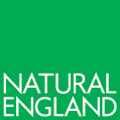Annex B: Provisions relating to licensed actions on or around protected sites in Buckinghamshire.
Published 7 September 2020
Applies to England
Licence annex B: provisions relating to licensed actions on or around Special Areas of Conservation (SACs), Special Protection Areas (SPAs), Sites of Special Scientific Interest (SSSIs), and/or Ramsar sites within the county of Buckinghamshire.
| SSSI name | European Designated Site name (where applicable) | Licence condition |
|---|---|---|
| Muswell Hill SSSI | No additional conditions imposed. | |
| Rodbed Wood SSSI | All vehicles must be restricted to existing tracks. Limit location of traps to existing sett footprint or areas of scrub. Limit location of traps to existing sett footprint or/ and areas of rhododendron, cherry laurel scrub or conifer plantation. |
|
| Shabbington Woods Complex SSSI | All vehicles must be restricted to existing tracks. Limit location of traps to existing sett footprint. |
|
| Temple Island Meadows SSSI | Except on existing tracks, no vehicle use nor placing traps alongside any watercourses or waterbodies, nor within any wet area, fen, bog or mire. All vehicles must be restricted to existing tracks. Limit location of traps to existing sett footprint or areas of scrub. Limit location of traps to existing sett footprint or/ and areas of rhododendron, cherry laurel scrub or conifer plantation. |
Notes to Annex B
General note on interpretation
Protected sites that are listed above are not necessarily part of any active operations. Active operations can and will only occur on protected sites where landowner/occupier permission has been granted.
Within the licence conditions, use of the word ‘avoid’ denotes a prohibition, i.e. it indicates that an area must be excluded from relevant activities or that activities must not be undertaken during the time period stated or in the manner described. Similarly, the word ‘restrict’ means that activities must be confined to the areas or time periods stated.
For further details on each protected site and its notified features of special interest and/or European Site qualifying features please enter the site name into the following link: https://designatedsites.naturalengland.org.uk/SiteSearch.aspx.
Individual notes
Note A
Natural England will inform the licensee from time to time of the information it requires. This is likely to focus on whether fox control is routinely undertaken on the relevant site and/or on areas of participating land within a few kilometres of the site. The licensee is expected to use reasonable endeavours to assist Natural England with the gathering of this information.
Note B
Natural England may form the judgment that measures should be introduced to secure the protection of species associated with this site, such as fox control, anti-predator fencing, habitat management, or buffer zones in which badger control is not undertaken. Such measures may be secured through cooperation between licensees, landowners, occupiers, and/or public bodies. If it considers it necessary to do so, Natural England may: exercise its powers under sections 28J-K of the Wildlife and Countryside Act 1981 or regulation 20 of the Conservation of Habitats and Species Regulations 2017; and/or revoke and re-issue this licence with revised terms (provided that such terms will be reasonable and proportionate in all of the circumstances).
Note W
European protected species are listed in Schedule 2 (animals) and Schedule 5 (plants) of the Conservation of Habitats and Species Regulations 2017. Nationally protected species are listed in Schedule 5 (animals) and Schedule 8 (plants) of the Wildlife and Countryside Act 1981 (as amended). Under these laws (regulations 43 and 47 of the 2017 Regulations and sections 9 and 13 of the 1981 Act), it can be an offence to:
- deliberately capture, injure or kill any wild animal of a European protected species
- intentionally kill, injure or take a nationally protected wild animal
- deliberately disturb wild animals of any European protected species
- intentionally or recklessly damage or destroy any structure or place which a nationally protected animal uses for shelter or protection, disturb such an animal while it is occupying such a structure or place, or obstruct access to any such structure or place
- damage or destroy a breeding site or resting place of any wild animal of a European protected species
- deliberately take or destroy the eggs of any wild animal of a European protected species
- deliberately pick, collect, cut, uproot or destroy a wild plant of a European protected species
- intentionally pick, uproot or destroy any nationally protected wild plant
Great crested newt, otter, dormouse, and sand lizard are European and nationally protected species.
Note Y
All birds, their eggs and nests (while in use or under construction) are protected under the Wildlife and Countryside Act 1981. This licence does not allow you to take or destroy such nests. Birds species listed under Schedule 1 of that Act have additional legal protection so care must be taken to avoid their disturbance during the breeding season.
Note Z
All bats and their roosts (even when not occupied by bats) are protected by the Wildlife & Countryside Act 1981 and by The Conservation of Habitats and Species Regulations 2017. This licence does not allow you to enter or obstruct any bat roost, nor to disturb any bat whilst it is occupying a roost. Care must be taken to avoid sustained human presence near, or artificial illumination of cracks and cavities in trees and man-made structures, and of any mounted boxes.

